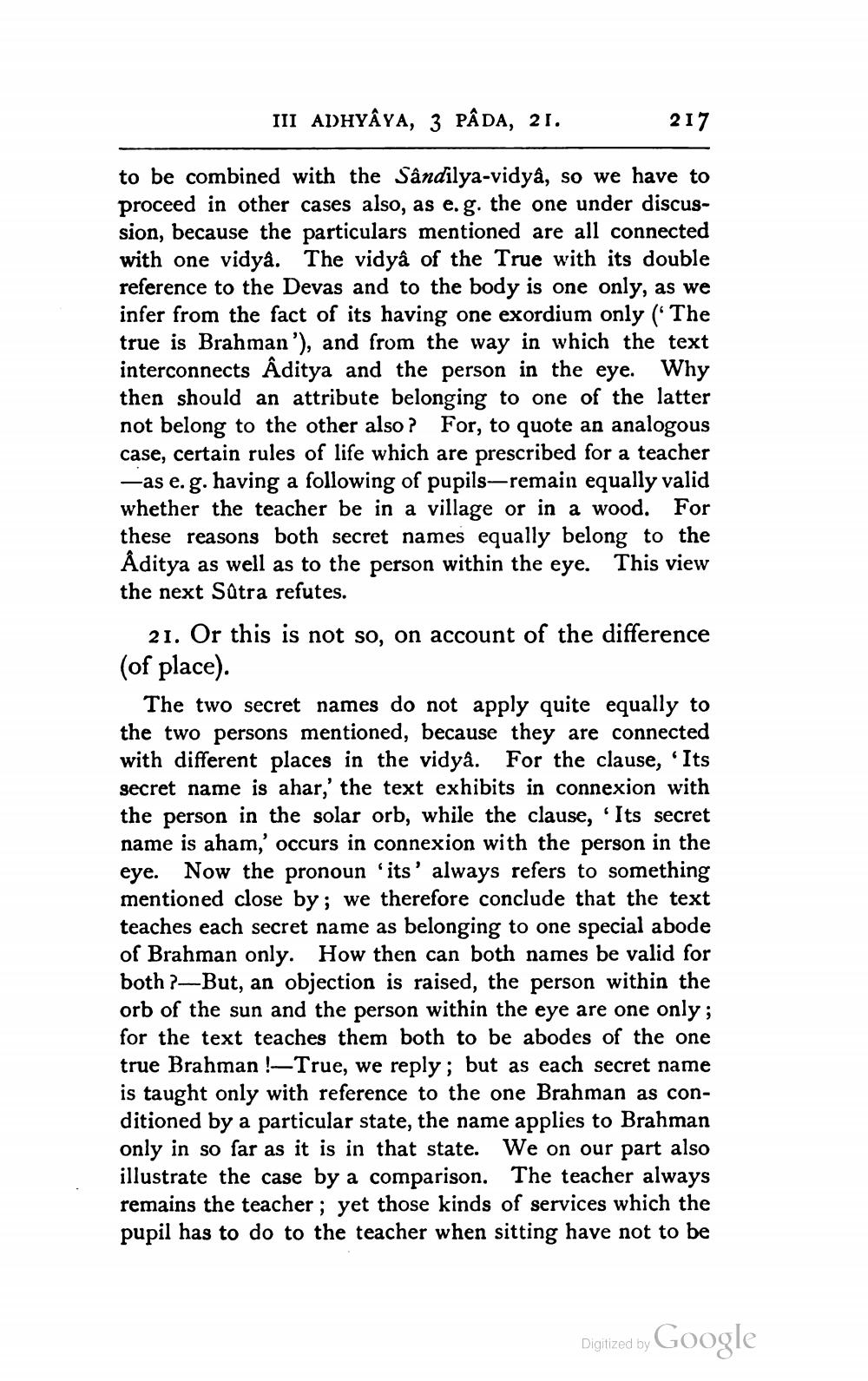________________
III ADHYAYA, 3 PÂDA, 21.
217
to be combined with the Sândilya-vidyâ, so we have to proceed in other cases also, as e.g. the one under discussion, because the particulars mentioned are all connected with one vidya. The vidyâ of the True with its double reference to the Devas and to the body is one only, as we infer from the fact of its having one exordium only (The true is Brahman'), and from the way in which the text interconnects Aditya and the person in the eye. Why then should an attribute belonging to one of the latter not belong to the other also ? For, to quote an analogous case, certain rules of life which are prescribed for a teacher
-as e.g. having a following of pupils—remain equally valid whether the teacher be in a village or in a wood. For these reasons both secret names equally belong to the Aditya as well as to the person within the eye. This view the next Satra refutes.
21. Or this is not so, on account of the difference (of place).
The two secret names do not apply quite equally to the two persons mentioned, because they are connected with different places in the vidya. For the clause, Its secret name is ahar,' the text exhibits in connexion with the person in the solar orb, while the clause, Its secret name is aham,' occurs in connexion with the person in the eye. Now the pronoun 'its' always refers to something mentioned close by; we therefore conclude that the text teaches each secret name as belonging to one special abode of Brahman only. How then can both names be valid for both ?—But, an objection is raised, the person within the orb of the sun and the person within the eye are one only; for the text teaches them both to be abodes of the one true Brahman !—True, we reply; but as each secret name is taught only with reference to the one Brahman as conditioned by a particular state, the name applies to Brahman only in so far as it is in that state. We on our part also illustrate the case by a comparison. The teacher always remains the teacher; yet those kinds of services which the pupil has to do to the teacher when sitting have not to be
Digitized by
Digized by Google




